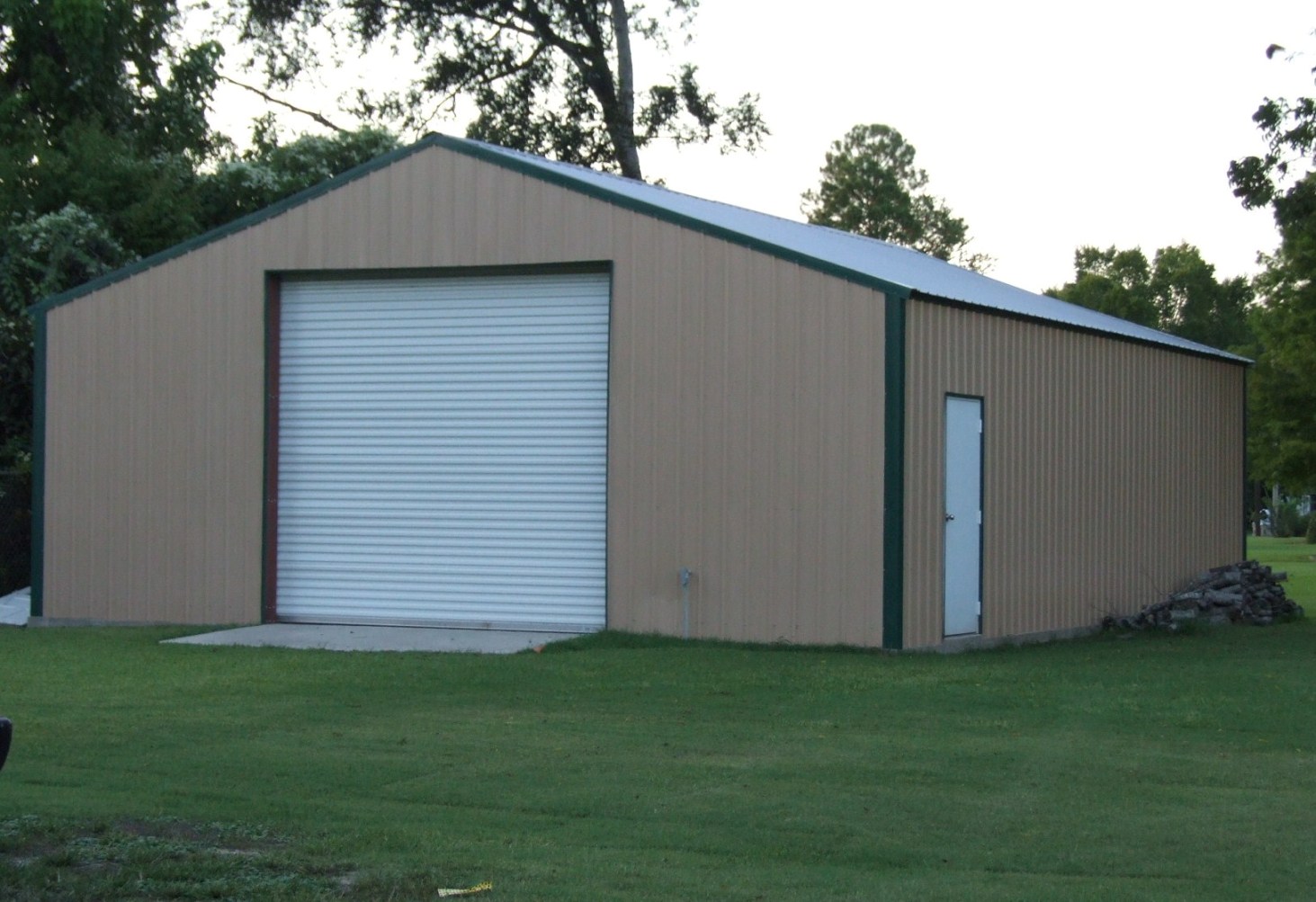HJL or JWR
I will be building a small building to house electronic equipment (batteries for off-grid) and want to protect it from any EMP type of conditions. If we use metal roofing and clad the outside in corrugated metal would that be satisfactory protection? There will have to be ventilation for it too. The equipment will have to be well grounded.
HJL’s Comment:
If the panels are bonded together well (meaning more than just the 1 screw every 4 feet) and you have some form of conductive flooring also bonded to the building, then yes, it would work. Most metal building will not work well because of those two deficiencies.











The military uses this concept to store ordnance material, using a grounding grid. Find a copy of OP-5 Vol I for detailed info.
There is also the recently invented conductive concrete that could be used for the floor, or floor and walls. http://spectrum.ieee.org/tech-talk/transportation/infrastructure/conductive-concrete-for-icefree-roadways
And: https://www.allaboutcircuits.com/news/protecting-technological-infrastructure-with-emp-proof-conductive-concrete/
Great information. I had this same question.
I have thought of using an old metal file cabinet as a small Faraday cage for some small electronics, lining it with cardboard. Reasonable idea?
Thanks
I have often wondered about the foil backed foam insulation. The foil of each sheet overlaps the next. That leaves the top and bottom open. But does that offer any protection???
I have a building like that it’s 24×48 with an 8×40 container attached to it. Even though it’s just normal construction, the Faraday shielding effect isn’t perfect the reduction in signals from the outside is quite significant, If I take a 4 watt handheld on VHF the signal is completely attenuated within 100 feet of the building. I would guess if it were fully bonded like HJL mentions it would almost block anything.
Remember any wire or cable that is not completely shieded and shield bonded to the building will compromise the attenuation to a point, so Power, and antenna should be in metal conduet. But again mine is not, and I have a lot of power cables, and antenna cables entering the building. Even though the attenuation is not compromised that much. I would say a great choice of buildings.
Dave
1) If you can get a cell phone or radio signal inside your cage, it is faulty
2) A (broken) microwave oven is the perfect device as it is actually a Faraday cage….duh
3) For $20,000 a Sandy Hook, CT company made an EMP device to test the US Govt. best hardened gear.. the pulse wave not only penetrated, but bounced around inside destroying everything.. you can see this discussed on youtube with ADM Woolsey (Fmr CIA DIR)
I am refurbishing my warehouse building. All metal. Perfect cell reception inside is pretty dependable. Panels are separated by foam and mastic. Screws have rubber grommets. I have seen the consequence of a short and poor grounding eating roof material. The electrical path followed went from roof to gutter to down spout and not through the steel frame to give you an idea of how panels are isolated. Insulation material does not inhibit RF. You would have to pick between water proof and Faraday.
Remember an actual EMP would cover an extremely large range of frequencies throughout the EM spectrum. The 2008 congressional testing was limited to “first sign of fault” because they had to return the cars being tested. The Soviet Union also did some testing in the 1960’s and results impacted pre-computerized vehicles. (Wish I could still find that reference).
Now, how can a non-computerized vehicle be impacted? Here’s where it gets interesting. It’s not just the chips that are impacted by the initial pulses. The energy pushed out by an EMP results in waves that cause materials to resonate. Anything that can function as an antenna can resonate. So even copper and other metal wires can resonate to the point of melting depending on conditions.
The grounding I see talked about here can also resonate. Wires used to ground something resonate on a frequency dependent on the length of wire. In HAM radio terms it can end up functioning like a counterpoise and amplify the problem. Instead of grounding equipment think about a layered approach. Ground the sealed metal outer layer. Have an insulated inner layer (plastic, glass, or other non conductive materials) then metal sealed layer (different metal from outer layer) add repeat as often as possible. And most important, detach anything that can function as an antenna.
The strength of the EMP in frequency ranges that will cause issues, will depend on type of material in the bomb, line of sight, proximity and even atmospherics. We just don’t know, and no one can really test properly. Heck, someone’s equipment in Miami might survive just because the antenna was unplugged, when someone in Kansas could EMP proof a building and still have components corrupted. We just don’t know. What we do know is that having a layered approach will increase the odds of equipment survival.